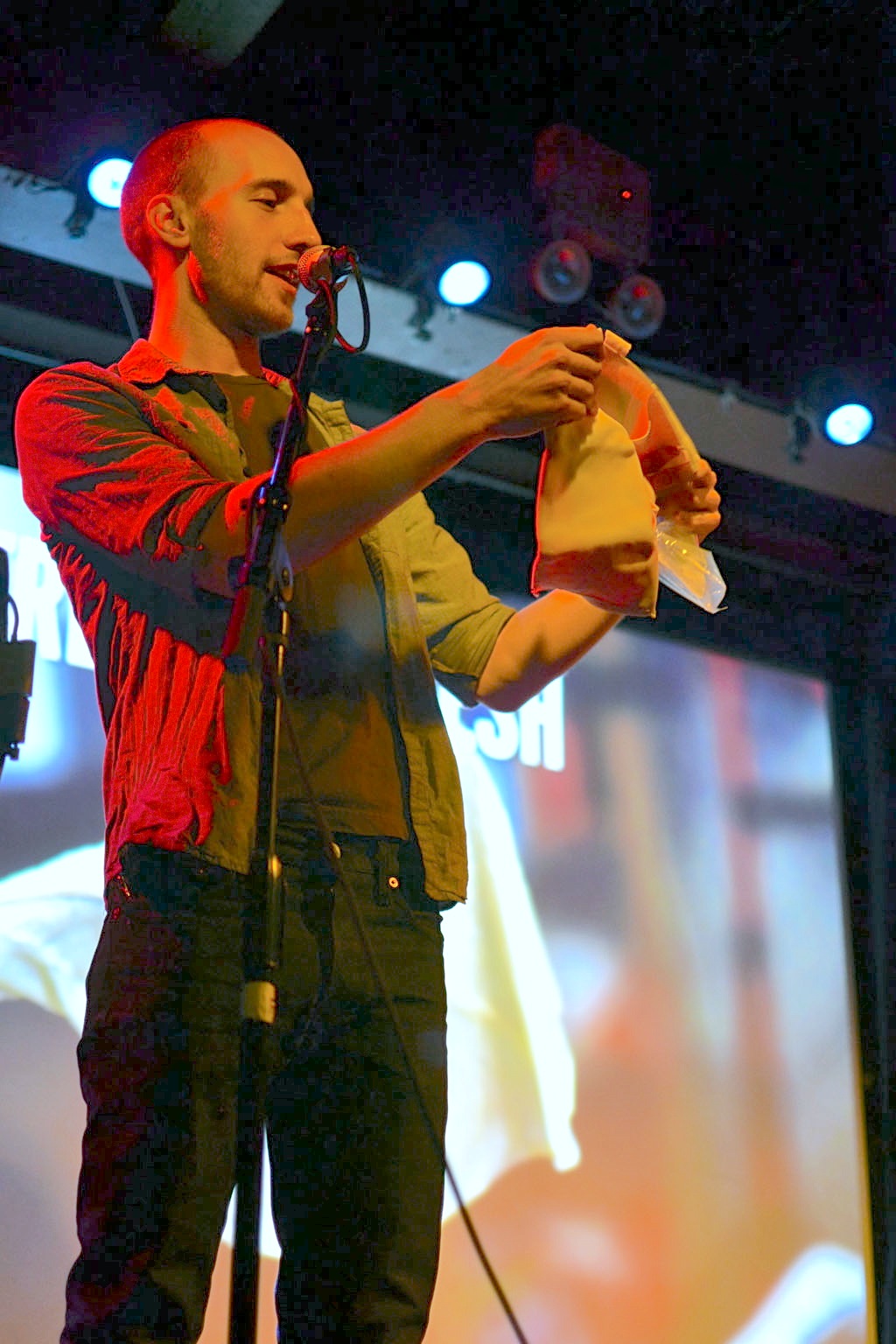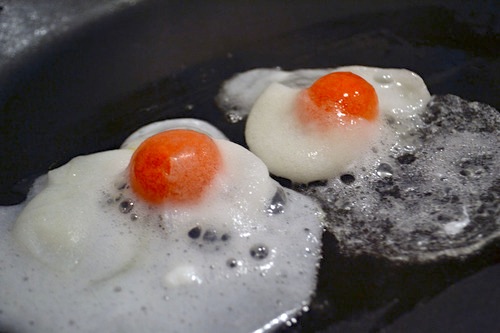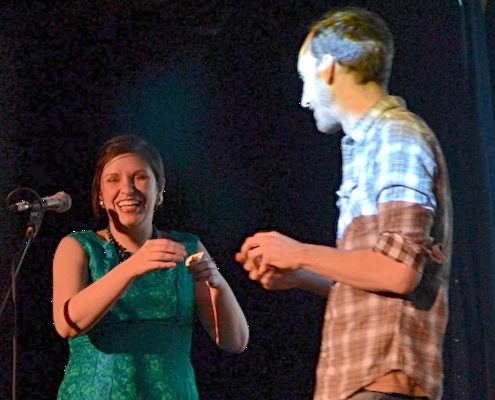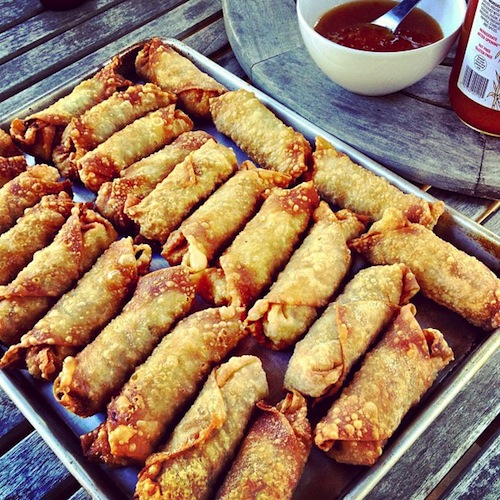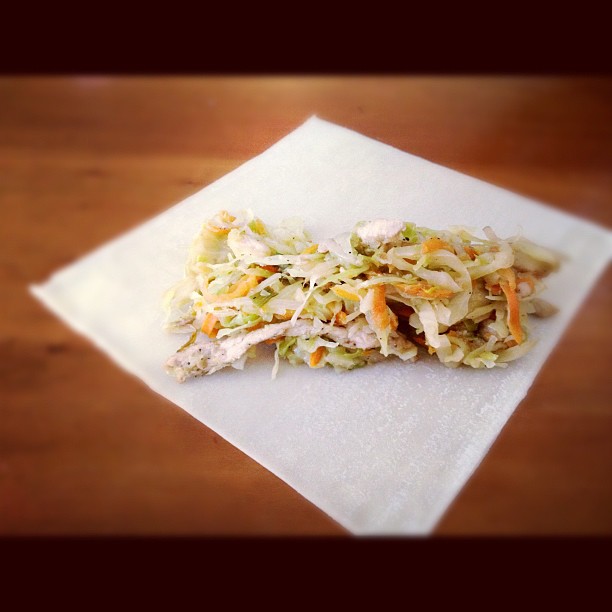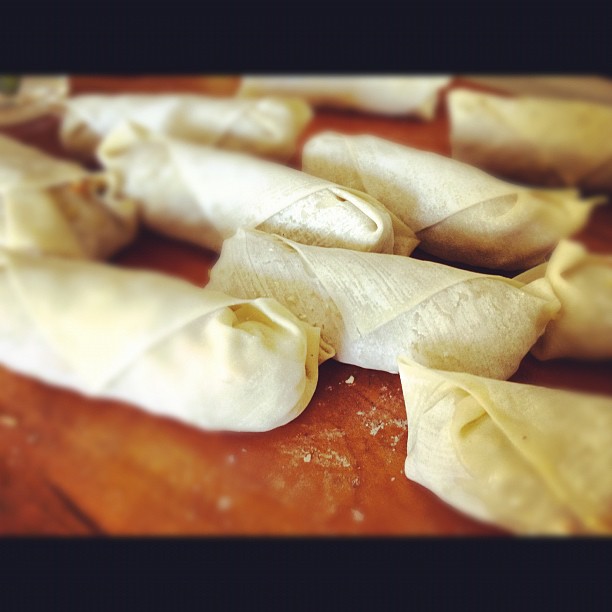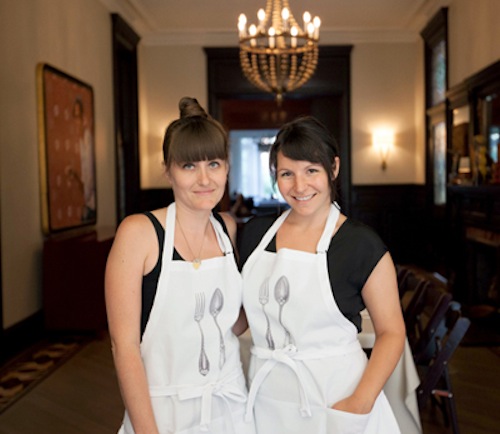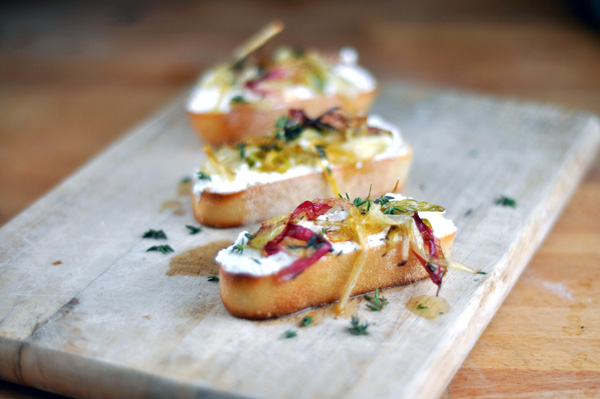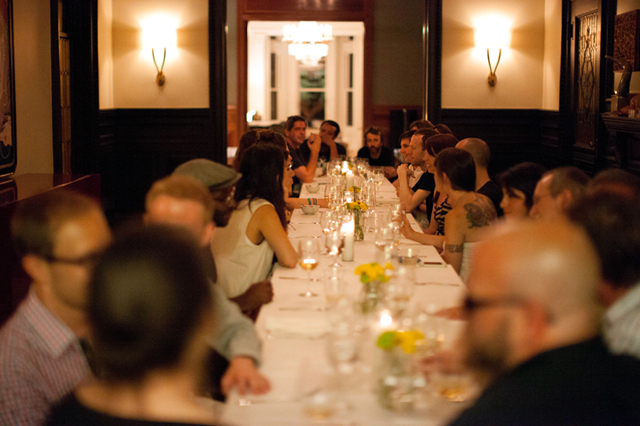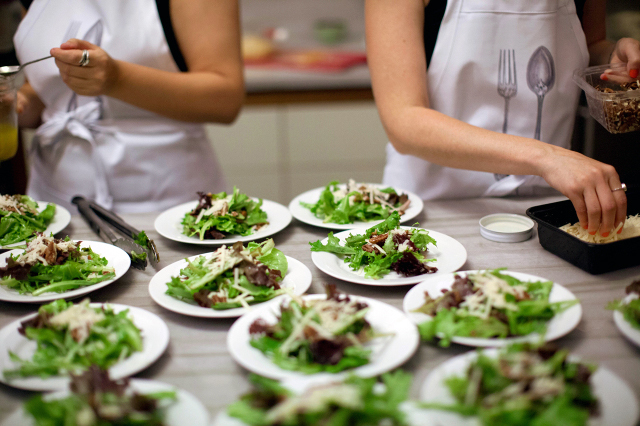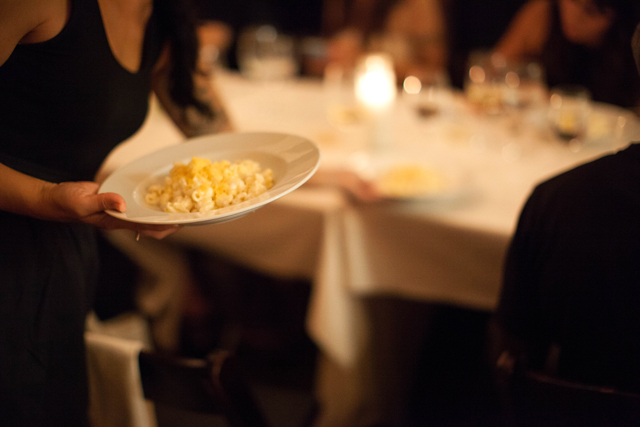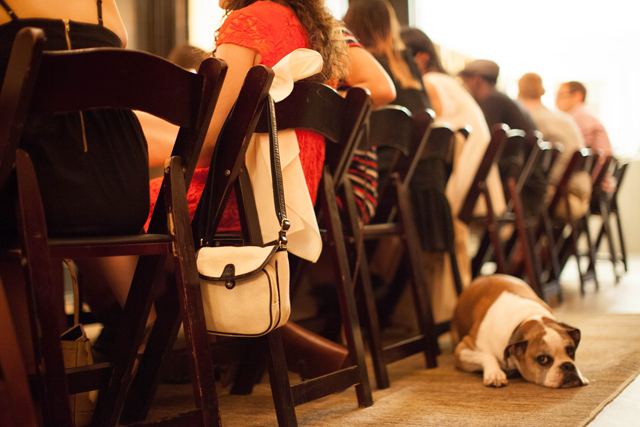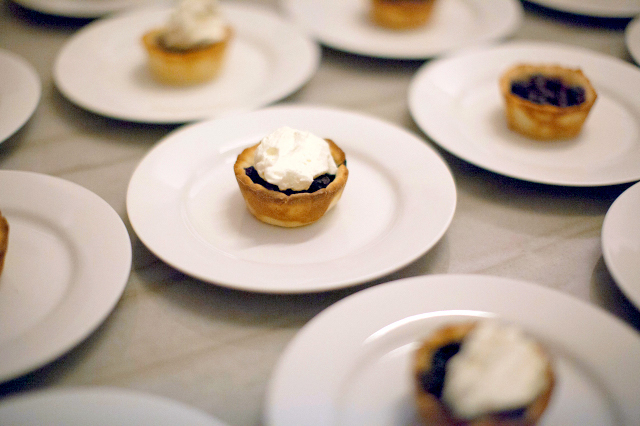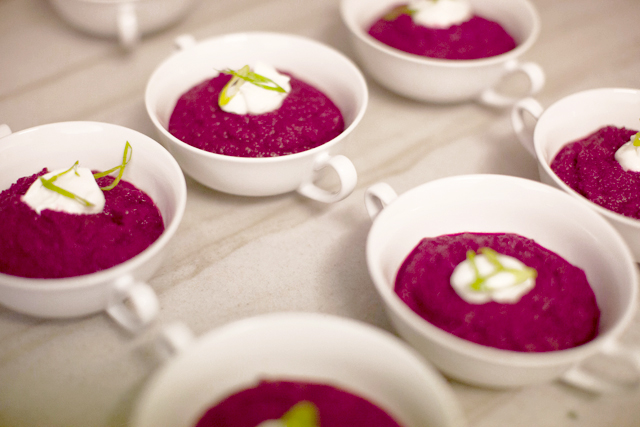Photos provided by Sarah Lohman and Jonathan Soma
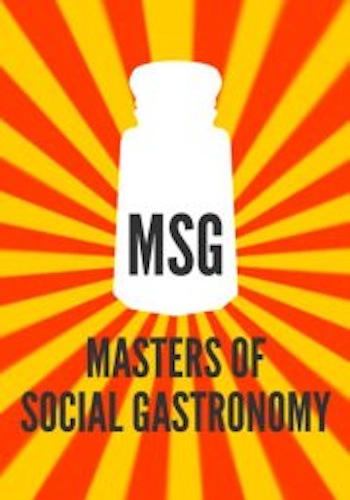 With the food media focusing on celebrity chefs, hot restaurants, and must-try dishes, it’s often easy to imagine the “foodie” movement as a zombie-like army that leaves a trail of dishes in its wake. Yet instead of pigging out, there’s an underground current of food enthusiasts that are “geeking out” – getting as excited about the history and science of food as they are about eating it. Masters of Social Gastronomy is at the forefront of that movement.
With the food media focusing on celebrity chefs, hot restaurants, and must-try dishes, it’s often easy to imagine the “foodie” movement as a zombie-like army that leaves a trail of dishes in its wake. Yet instead of pigging out, there’s an underground current of food enthusiasts that are “geeking out” – getting as excited about the history and science of food as they are about eating it. Masters of Social Gastronomy is at the forefront of that movement.
Led by Sarah Lohman, the culinary historian behind Four Pounds Flour, and Brooklyn Brainery founder Jonathan Soma, MSG is a hilarious, laid-back and addictively informative journey through the back-alleys of food history, culture and science.
How did Masters of Social Gastronomy get started?
Sarah: Soma and I met at an event I did about artists whose works were inspired by literature. I was featuring cocktails Dickens mentioned in his 1842 book "American Notes." Everyone who came worked in small groups to learn to make their own cocktails. So, Soma came, and he came up to me and was like "I'm Soma and I run the Brooklyn Brainery and you should come take a class." So I took his card, and luckily someone standing right next to me went, "Ooh, the Brooklyn Brainery, they're great!" So I emailed him and taught my first classes in the spring of 2009.
I loved teaching at the Brainery, so I started doing it every other month or so, and Soma and I would sit in on each other’s classes. We soon realized that we had very complimentary bodies of knowledge--I knew a lot of social history about food, while he could always answer science questions. So last year, after Christmas, he sent me an email telling me we were going to start a public lecture series and that it would be awesome. Basically this started with Soma, demanding that I do awesome things, and me saying "ok."
Soma: Sarah's story is right on the money. I went to her Dickens event with the twin intents of drinking free cocktails and recruiting her for the Brainery. I did the first before I did the second, so I'm impressed that it all worked out.
As for MSG, the very very very beginnings happened long before the Brainery even started. Way back in 2010, Kent Kirschenbaum and Will Goldfarb of the Experimental Cuisine Collective presented at Secret Science Club at the Bell House. It was a super engaging hour and a half about the intersection of chemistry and food, and it left a really strong impression on me.
Sarah and I had both been teaching/presenting for a while, and I thought: we love food, we have to do this, we have to ramble at drunk people about food. Why there was no monthly talk on food - in Brooklyn of all places - was beyond me, so off we went!
How long has MSG been running, and what are some of the challenges in creating this type of program?
Sarah: Our first talk was in January 2012. We've done Strange Meats, Candy, Artificial Flavors, Fake Meat, Gelatin, Ice Cream, and Drinking Games. And one podcast on Raw Milk.
It took us forever to come up with a name--that was catchy and evocative. It was the "Stomach Eights" and we were going to start at 8pm. I still kinda like it. Coming up with topics hasn't been trouble--there's always stuff we find interesting and want to know more about, and we'll start talking about something and get excited. And at the very first event we had over 100 people show up, and there must have been 300 at Fake Meat--so clearly people are interested!
Soma: Yep, names are the most important and most difficult part of any sort of series. Stomach Eights was a horrible, horrible name and while I'm a terrible person for suggesting it, Sarah's an even worse person for not immediately shooting it down. I was sold on MSG as being the acronym, so we had to form something backwards from there. One fateful night at a bar my friend Andy came up with Masters of Social Gastronomy and we were set!
What has been your favorite lecture to date?
Sarah: Definitely “Artificial Flavors”! I enjoyed it because the topic has a lot of negative rhetoric and not enough discussion of the facts. So we turned to history and science to question the idea of "artificial". How long have we been using substitutes in our foods? What does it mean when we say "chemical"?
The trick to getting people to question something they believe to be true - like, “artificial flavors are bad” - is to put the choice in their own hands. I made two batches of identical cookies, one with natural vanilla and cinnamon and one with artificial vanilla and cassia (a popular substitute for cinnamon). We did a double blind taste test, and people preferred the "artificial" cookies 2-to-1. Granted, we didn't employ the full scientific method, but it was still interesting, and people were really surprised by the results.
Soma and I are actually neither for nor against artificial or natural flavors. We just wanted to dispel some of the myths surrounding the debate. And after the talk, people stuck around a long time after to debate it amongst themselves. Total strangers were talking to each other about the lecture and what they thought--it was amazing. I think we'll be taking on more controversial topics in the future.
Soma: I hate agreeing with Sarah so much, but Artificial vs. Natural Flavors was definitely the best. I was really giving the comparative safety of artificial flavors a hard sell, and almost ended up in a brawl afterward as a result. People find it tough to believe that store-bought strawberries contain trace amounts of arsenic! Luckily a flavor chemist had my back.
Do you have any anecdotes about projects gone horribly wrong while preparing for a lecture?
Sarah: For the candy lecture, I wanted to make homemade Peeps for everyone in the audience. But I decided to make them chicken flavored. And the morning of the lecture, I started making the marshmallows, and they were just a mess. My fiancé asked me if I was making marshmallow tentacle monsters.
I brought one of the monster marshmallows to MSG, told the story of what happened, and everyone thought it was hilarious. Then I made Soma eat the peep with me. It tasted just like ramen. Sometimes the disasters make the best stories.
Soma: My unofficial job is to eat poisonous/horrifying things in the name of MSG. For Candy I ate not-for-human-consumption menthol crystals in pursuit of "the coldest candy," while Artificial Flavors had me trying homemade wintergreen flavoring made out of hydrochloric acid and wart remover (yes, it burned). For Gelatin I made and ate an edible cup, which really wasn't so bad at all. Pork floss and tofu skin – for Strange Meat/Fake Meat - both sound sort of weird but are a lot more pedestrian than I usually give them credit for. I think the Raw Milk podcast is the only time I've been spared.
What role do you think this "alternative" food education can play in the "foodie" movement?
Sarah: I spent a long time wracking my brain about this question. I feel like we started this lecture because there was a void. No one was doing something like this. The Brooklyn Kitchen and the Culinary Historians of New York spring to mind, but I feel they are too expensive to attract a young audience.
Soma: I think the foodie movement isn't just one thing, it's a million people all approaching food from different perspectives - what does it make sense to eat, what might we eat in the future, what's good, what's dangerous, etc. - and MSG ties it all together with a good bit of fun. We aren't proselytizing, and don't have an agenda to push, so we can talk about issues that might otherwise be off-limits or tough to find unbiased information about.
New York is also a great place to have these discussions. People in Queens are making edible cups, there's a huge store that sells nothing but fake meat in Chinatown, the city was once attacked by a mysterious, artificial maple syrup smell – and the list goes on from there.
Is there any other noteworthy food programming/education that you admire?
Sarah: Most of the food related classes I go to are at the Brainery, because they're cheap, promote discussion, and are taught by interesting people. There are also great narrative non-fiction books on food, and Slate.com has been killing it with their food essays recently.
Soma: The Experimental Cuisine College is a little on the professional/scientific end of things, but they're fantastic. At one recent talk, Subha Das of Carnegie Mellon was talking about using nuclear magnetic resonance to profile different sodas against one another. Incredible! - and totally free.
What's next for MSG?
Sarah: Perhaps we should crowd source that question! I'm not bored with our format yet, and we have tons of idea, so we're just going to keep talking. As long as people keep showing up, we'll keep doing it. After we have a year of these under our belts, we're talking about putting them together in a book with recipes and science experiments. We're pretty excited about that.
Soma: Sarah pretty much nailed that one with the "people enjoy what we're up to now”, so it all sounds good to me.
Masters of Social Gastronomy is a monthly lecture series at Public Assembly in Brooklyn, NY. The next lecture takes place on Tuesday, September 25th at 7pm.

